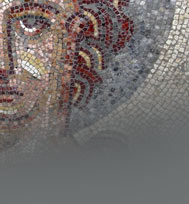


Roman concrete (opus
caementicium)
Roman concrete is material mainly composed of water,
chalk, and sand. Roman concrete was a changing recipe
that varied to the needs of the structures build
throughout the empire. Some of the concrete mixtures are
composed of volcanic sand, small stones, broken brick,
and limestone. The Romans had various recipes to make
water proof structures like bathhouses and aqueducts to
create a nonabsorbent concrete needed to make such water
proof structures.
Concrete enabled ancient Romans to think architecturally
advanced compared to other civilizations at that time.
Concrete allowed the Romans to push the limits of
structure from the typical brick and mortar buildings to
domes and vaulted ceilings. Many of the concrete
structures created by Rome had a very important
ingredient called Pozzolana that is volcanic ash found
at Pozzuoli near Naples.
Roman concrete gave the Romans an advantage because this
allowed them to build structures that were less costly
and buildings that did not require internal supports.
Prior to the use of Roman concrete, the Romans were used
to the typical post and lintel structures of the Greeks
and Etruscans. Lintel structures are load-bearing
building components that were used to span over two
vertical points with limited architectural properties.

Baked Brick
The Romans made fired clay bricks throughout the Ancient
Roman Empire to build elaborate buildings. These bricks
were made from Roman legions and citizens who operated
kilns that were built throughout the empire. Many of the
bricks were stamped with the legion's mark that produced
the bricks. In the middle of the 1st century BCE, Brick
makers used unique stamps that had the name of the
brickyard where the bricks were produced. Brick making
reached its height of production and quality in the
first century. Rome used bricks far and wide; in both
the private and public constructions. The Romans took
the skilled trade of brick making throughout the empire
and even trained locals on how to produce bricks. These
bricks ranged in size and shape. Many of the bricks were
square, rectangular, triangular, and round; depending on
the construction needs. Bricks also varied in size and
height and length. Some Roman brick buildings had bricks
as big as three feet in length.